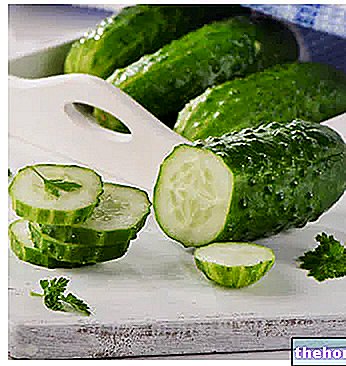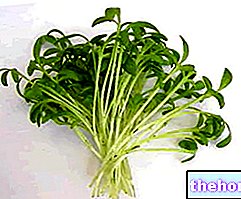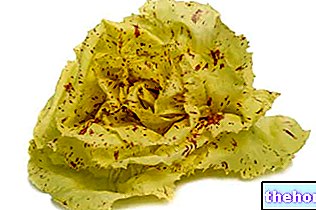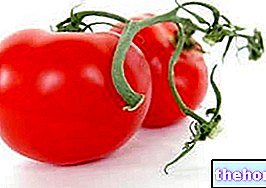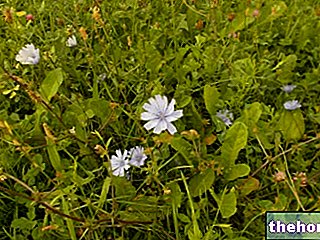Generality

Disambiguation: in the following article, the Valerianella locusta will be voluntarily called "Valerian salad"; this in order to facilitate the distinction from Valeriana officinalis.
While the valerianella is mainly used for food purposes, the Valeriana officinalis it finds ample space in herbal medicine for the tranquilizing properties of the roots and relative extracts.
There Valeriana officinalis it belongs to the same family as the Valerianella locusta, but of different Genus and Species.
The valerian salad is therefore a vegetable to be consumed in a similar way to lettuce and chicory (radicchi). The organoleptic characteristics sought are offered by the young plant and its soft leaves; when it is left to mature, the plant stretches for flowering and the production of seeds up to 30-40cm in height, therefore reduces its foliar mass and develops portions less pleasant to the palate (stem and flowers). When developed, valerianella is more palatable in cooked form.
Description
The valerian salad is an annual (when sown in winter) or biennial herbaceous plant. It looks like a stemless bush, with spatula-shaped, bright green leaves about ten centimeters long.

There are two distinct varieties (cultivars) of valerianella. The first, which produces large seeds and elongated leaves, is called "d" Holland a Seme Grosso "(suitable for greenhouse cultivation); the" atra, on the other hand, bears fruit with smaller seeds and is called "Green Heart Full" ( suitable for outdoor cultivation).
Origin, Diffusion and Cultivation
The valerian salad is a spontaneous plant of the Mediterranean territory and is present in all the relative zones with a temperate climate. According to certain French botanical studies (rather dated), the territories of origin of the valerianella are the major Italian islands, Sicily and Sardinia.
The valerian salad can be easily grown, as it does not require special precautions. It resists brilliantly both in the plains and in the mountains and prefers sunny, well-draining and nitrogenous soils; it can complement the exploitation of the soil used for potatoes. Being a plant that is born in temperate climates, in the northern regions should be protected from winter frost.
The cultivation of valerianella can be done by direct sowing (broadcasting) in rows 15-24cm apart. At a temperature of 15-20C ° the seeds germinate in about 7 days; sowing can be carried out in the period between spring and autumn, considering a productive life cycle of about 2-3 months. Weeding is always fundamental. Watering is to be done with dry soil and never in the hottest hours. The parasites are the same as in all other salads.
Gastronomic use
The culinary use of valerian salad is comparable to that of other leafy vegetables. Of the young one, raw consumption is preferred (for the sweetness and delicacy of the flavor); if sautéed in a pan, it is therefore better not to overdo it with spices and aromas (such as pepper and garlic). Furthermore, in both cases, it is advisable to use a delicate extra virgin olive oil.
Nutritional Properties
Valerianella has a very low energy intake and its nutritional function is mainly to increase the intake of fiber, mineral salts and vitamins in the diet. The few calories contained are of carbohydrate and protein origin, while fats are irrelevant; cholesterol is absent. The most important mineral salts are iron and potassium, while as regards vitamins the concentrations of carotenoids (pro-vit. A), ascorbic acid (vit. C), tocopherols (vit. E) and folic acid stand out.
From a dietary point of view, the valerian salad is suitable for any type of diet, including: low-calorie therapy against overweight and nutritional strategies for the treatment of metabolic pathologies. The portion of valerianella is (more or less) free and oscillates from 50 to 200g.
Other Foods - Vegetables Garlic Agretti Asparagus Basil Beets Borage Broccoli Capers Artichokes Carrots Catalonia Brussels sprouts Cauliflower Cabbage and Savoy cabbage Red cabbage Cucumber Chicory Turnip greens Onion Sauerkraut Watercress Edamame Chives Chanterelles Flour Cassava Flowers Pumpkin Flour Edible Flowers Pumpkin Seasonal Fruits and Vegetables Endive Salads and Salads Strengthening Salad Lettuce Aubergines Vegetables Nettle Pak-Choi Parsnip Potatoes American Potato Peppers Pinzimonio Tomatoes Leeks Parsley Radicchio Turnips Red Turnips Radishes Rocket Shallots Endive Celery Celeriac Seeds Sprouted Spinach Truffle Valianamberi or Jerusalem artichoke laxatives Saffron Pumpkin Zucchini Vegetables - Nutritional properties OTHER VEGETABLE ITEMS Categories Food Alcoholics Meat Cereals and derivatives Sweeteners Sweets Offal Fruit Dried fruit Milk and derivatives Legumes Oils and fats Fish and fishery products Cold cuts S pezie Vegetables Health recipes Appetizers Bread, Pizza and Brioche First courses Second courses Vegetables and Salads Sweets and Desserts Ice creams and sorbets Syrups, liqueurs and grappa Basic preparations ---- In the kitchen with leftovers Carnival recipes Christmas recipes Light diet recipes Women's Day, Mum, Dad Recipes Functional Recipes International Recipes Easter Recipes Recipes for Celiacs Recipes for Diabetics Recipes for Holidays Recipes for Valentine's Day Recipes for Vegetarians Protein Recipes Regional Recipes Vegan Recipes

